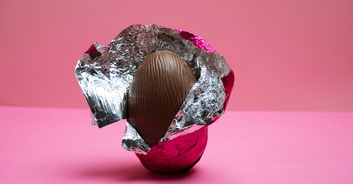There is no doubt that Instagram and other social media platforms have changed the way a lot of people eat. The fact that we all "absolutely must" photograph something before we pick up our knives and forks - for better or for worse - has shaped what we see on our plates and what we will more than likely see in the future.
You've all seen the Insta-perfect overnight oats shots, smoothie bowls and avo on toast. But, real talk: is eating like a food blogger actually any good for you? Womam's Health sought to answer the question themselves than ask Google. They caught up with 29-year-old food blogger and founder of Livia's Kitchen, Olivia Wollenberg, to see what she eats in a week. They then got expert dietician Eve Kalinick, author of Be Good To Your Gut, to dissect it.
The idea behind what a "good food blog" looks like is brightly coloured, ingredients arranged in an aesthetically pleasing fashion. Quite fortunately, brightly-coloured food usually means a high nutrition factor, but this doesn't always translate to a good diet.
Olivia says: "In 2014, I discovered I was sensitive to refined sugar, dairy, wheat, chickpeas, garlic and onions. I started on a low-FODMAP diet, which forced me to be more creative with food." On a typical day, she eats in three-hour intervals.
On Monday, she starts with overnight oats with almond butter, apple puree and maple syrup for breakfast, oat bread with smashed avocado and chilli flakes for lunch, a pear and an oat cookie as a snack and quinoa, salmon and kale poke with yuzu dressing for dinner.
The rest of the week follows the same template of lean protien, good fats and slow releasing carb,s but what is fantastic about Olivia's diet is she really knows how to switch things up without tiring herself out with excessive cooking, keeping things exciting with the creation of different dishes from the same ingredients and getting all the nutrients she needs.
Tuesday's dinner, for example, is grilled salmon with sweet potato and vegetables. Wednesday, she has cashew butter pancakes topped with berries, carrot and coriander soup with oat bread and avocado and brown rice pasta, pesto and vegetables.
Like everyone following a plan, the weekend is where things usually get really tasty. She has spinach and mushroom omelette with avocado or chocolate porridge with peanut butter for breakfast, vegetable salad with quinoa and pesto or scrambled eggs with spinach and avocado for lunch. For a nice snack, it's a rice cake with homemade chocolate spread or a few chocolate orange raw millionaire shortbreads, and Vietnamese summer rolls, pad thai and chicken in lettuce wraps or Beansprout, broccoli, carrot and courgette stir-fry with brown rice for dinner.
Giving herself option at the weekends means she can never veer off her plan too much if one day she eats out with friends or doesn't particularly feel up to the cooking. But most of this is my opinion - what does Eve Kalinick say?
"It’s great to see that Olivia enjoys vegetables and has good diversity in her diet. However, she may need to boost her calcium intake, since she avoids dairy. She could do this by trying goat’s or sheep’s cheese and yoghurt or fortified non-dairy milks. Also, non-genetically modified organic tofu, sesame seeds (and tahini) and seaweed, such as nori, are good savoury options."
Lalinick also suggests increasing "the sources of omega-3 in her diet, too, with wild salmon, mackerel and sardines."
"There are also lower amounts in chia, flax and hemp seeds. While treats here and there are part of a healthy diet, perhaps Olivia could swap some of these for stewed apple with cinnamon - it’s a natural source of sugar and provides a dose of excellent pectin fibre to aid the gut and digestion."
As examples to follow go, this particular lifestyle is one of the better ones. If you don't have the time to cook all these things, trying to keep this regime would be difficult, but making big batches and freezing the proteins and carbs can help. Otherwise, find something that works for you and makes you feel good. Instagram is a big place, and something is sure to speak to you.










